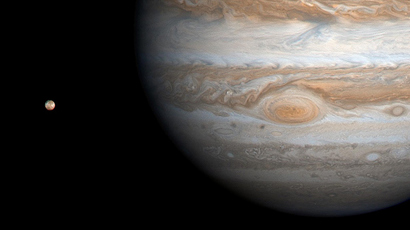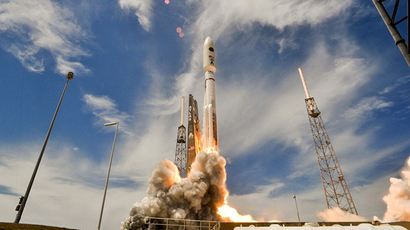Hydra close-up: New Horizons probe captures Pluto’s tiny moon
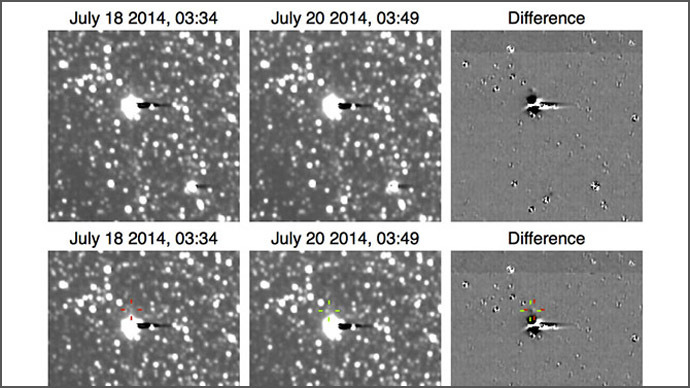
Ahead of a rendezvous with Pluto in July 2015, NASA’s New Horizons space probe has imaged the dwarf planet’s tiny moon, Hydra. Pluto’s neighborhood is poorly explored and scientists want to make sure there is no space debris in the probe’s way.
The spacecraft made a historic portrait of Pluto and its moons using a telescopic camera called LORRI (Long Range Reconnaissance Imager) from a distance of 430 million kilometers. The images were taken back in July, but released on the mission’s official page on September 12.
The scientists did not expect to see Hydra because of its tiny size, but the probe’s 48 10-second exposure pictures, when combined into one high-contrast view of Pluto’s neighborhood, made it possible to identify the moon on the overexposed image.
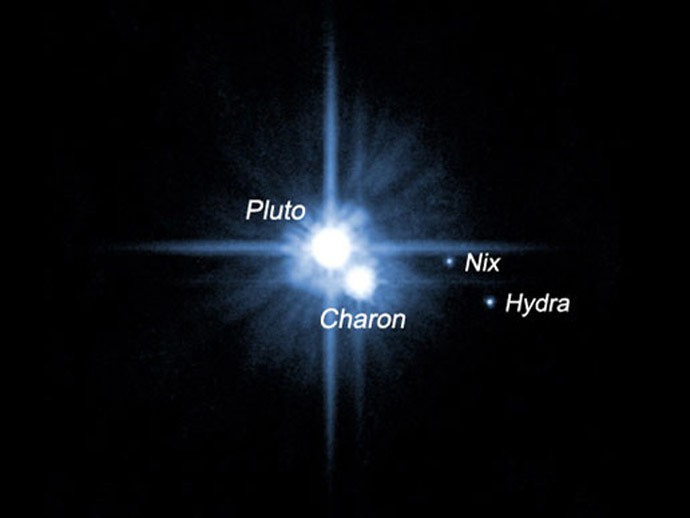
The fact that the LORRI camera managed to capture such a small space object from such a huge distance gave the New Horizons team confidence that, if there the probe meets an obstacle, they’ll notice it beforehand.
“Using those techniques, Hydra popped right out of the data, though it’s still very faint — several times fainter than the faintest objects the New Horizons camera was designed to detect — and still very close to Pluto,” John Spencer, of the Southwest Research Institute and member of the New Horizons Science Team, told the Discovery science news outlet.
“We’re thrilled to see it, because it shows that our satellite-search techniques work, and that our camera is operating superbly. But it’s also exciting just to see a third member of the Pluto system come into view, as proof that we’re almost there!” he added.
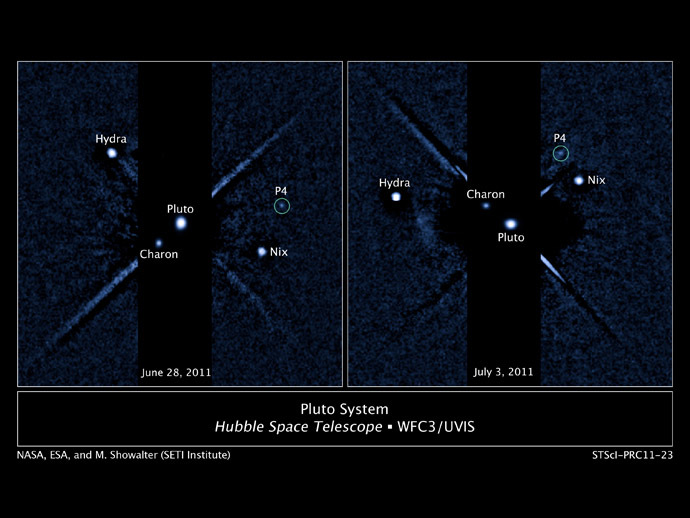
The NASA specialists spotted Hydra, one of Pluto’s five moons, back in 2005, processing the photos taken by the Hubble Space Telescope.
Launched in January 2006, the New Horizons spacecraft now traveling to Pluto and the Kuiper Belt is among NASA’s most famous and challenging exploration missions. The spacecraft will become the first manmade object to have a close encounter with Pluto on July 14, 2015.
While approaching Pluto, the New Horizons probe will conduct two series of long-exposure mosaic photos, in May and June 2015.
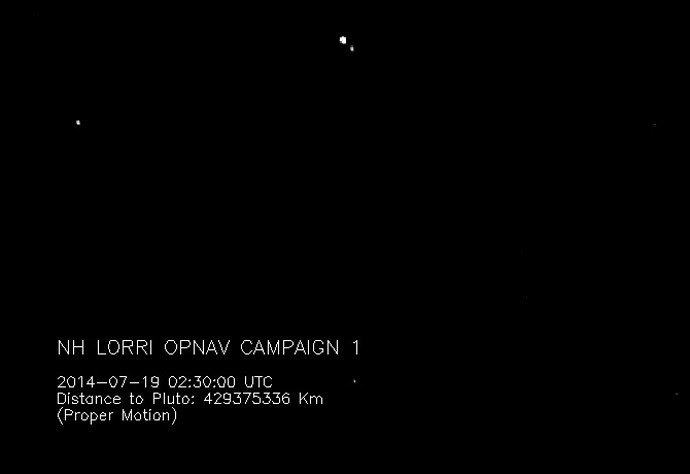
In late August this year, the piano-sized spacecraft full of sophisticated equipment crossed Neptune’s orbit some 4.25 billion kilometers from Earth. It has taken eight years and eight months, a record distance in space exploration.
A series of photos taken in July this year of Pluto and its biggest moon Charon orbiting its icy master planet at a very close orbit rose speculations in scientific circles that both might share the same atmosphere, being a so-called ‘binary planet’ system.













